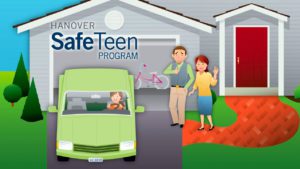 Teen Driver Source is comprised of a team of researchers, educators, and communicators from the Center for Injury Research and Prevention at The Children’s Hospital of Philadelphia Research Institute. They use a multidisciplinary approach to study the causes of teen driver-related crashes and then provide evidence-based interventions in order to advance the science of reducing teen driver crashes and their related deaths and injuries.
Teen Driver Source is comprised of a team of researchers, educators, and communicators from the Center for Injury Research and Prevention at The Children’s Hospital of Philadelphia Research Institute. They use a multidisciplinary approach to study the causes of teen driver-related crashes and then provide evidence-based interventions in order to advance the science of reducing teen driver crashes and their related deaths and injuries.
As part of the Children’s Hospital of Philadelphia, The Center for Injury Research & Prevention (CIRP) advances the health and safety of children, adolescents, and young adults through comprehensive research resulting in practical tools to reduce injury and promote recovery. The focus is on translating scientific research into practical tools for families, professionals, and policy makers; addresses injury prevention to after injury healing; provides expertise to a variety of sectors from public health to clinical care; and engages organizations to extend research to the real world.
Why do teens crash? There are many factors that come into play, but there are three common critical errors inexperienced teen drivers make that lead to serious crashes—lack of scanning to detect and respond to hazards, driving too fast for road conditions, and being distracted by something inside or outside of the vehicle.
Are teens & crashes preventable? Absolutely, with some parental controls, gained knowledge and experience, and attitude adjustments — teens and crashes are preventable.
PSA/YouTube video – NNID – Not now I’m driving – here is a good video to watch with your teens and get their buy in for how they too can follow NNID.
Talk to your teens about talking and texting on a cell phone while driving. While the kids might think they can talk and text at the same time as driving, this web page points out the reasons why they cannot.
Two or more peer passengers more than triple the risk of a fatal crash when a teen is behind the wheel. That’s startling! Here are tips for talking to your teen about peer passengers and responsible driving.
Do distracted driving laws work? Yes, when enforced or passed into law. Not all states have distracted driving laws and sometimes the fines are so miniscule the laws are not as effective as they could be. Text messaging is banned for all drivers in 34 states and DC; 30 states also ban the use of cell phones, including hands-free, for novice teen drivers.
Etcetera:
- What kinds of things do teen drivers do that turn into distractions?
- What kinds of distractions do peer passengers create?
- How destructive are peer passengers to teen drivers?
- General statistics of interest
Most of all, you should set a good example for your teen drivers. Adults, even though you have more driving experience, should always wear their seatbelts; follow speed limits; and not text and talk on the cell phone while driving. Common sense doesn’t grow on trees. It’s a learned behavior starting with you.





